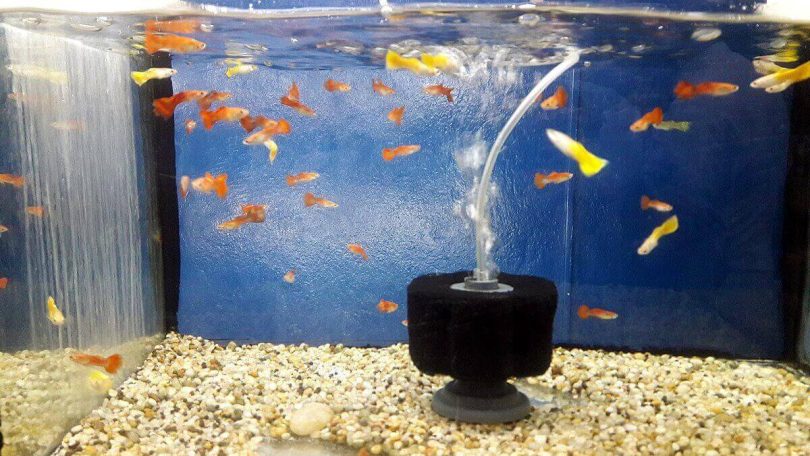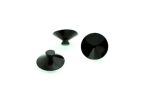Table of Contents
Maintaining a fish tank can be a relaxing and rewarding hobby, but it also requires regular maintenance to keep your fish healthy and happy. One of the most important aspects of fish tank maintenance is changing the filter. Filters help to remove debris, excess food, and waste from the water, which can quickly build up and harm your fish if left unchecked. But how often should you change your fish tank filter?
The answer depends on several factors, including the size of your tank, the type of filter you have, and the number and type of fish you keep.
As a general rule, most experts recommend changing your filter every four to six weeks, but this can vary depending on your specific situation.
For example, if you have a heavily stocked tank or a filter that is not designed for your tank size, you may need to change it more frequently. Conversely, if you have a lightly stocked tank or a filter that is oversized for your tank, you may be able to go longer between filter changes.
Overall, it is important to monitor your water quality regularly and adjust your filter maintenance schedule as needed.
If you notice that your water is cloudy, has a strong odor, or your fish are behaving abnormally, it may be time to change your filter.
By staying on top of your filter maintenance, you can ensure that your fish remain healthy and happy in their aquatic home.
Why Regular Filter Changes Are Important
Keeping your fish tank clean and healthy is essential for the well-being of your fish. One of the most important aspects of maintaining a healthy environment for your fish is to ensure that the filter is clean and functioning properly. Regular filter changes are crucial for maintaining a healthy and thriving fish tank.
Here are a few reasons why regular filter changes are important:
- Removal of debris and waste: Filters are designed to remove debris and waste from the water in your fish tank. Over time, the filter will become clogged with debris, which can lead to a buildup of harmful bacteria and toxins in the water. Regular filter changes ensure that the filter is able to function properly and remove any debris and waste from the water.
- Prevention of ammonia buildup: Fish produce waste, which breaks down into ammonia. Ammonia is toxic to fish and can cause serious health problems if it builds up in the water. Regular filter changes help to prevent ammonia buildup by removing waste from the water before it has a chance to break down into ammonia.
- Maintenance of water quality: Filters play a crucial role in maintaining the quality of the water in your fish tank. They help to remove harmful toxins and bacteria from the water, ensuring that your fish have a clean and healthy environment to live in. Regular filter changes help to maintain the quality of the water by ensuring that the filter is able to function properly.
In general, it is recommended that you change your fish tank filter every 2-4 weeks. However, the frequency of filter changes may vary depending on the size of your tank, the number of fish you have, and the type of filter you are using. Be sure to follow the manufacturer’s recommendations for your specific filter.
By regularly changing your fish tank filter, you can help to ensure that your fish have a clean and healthy environment to live in.
This will not only help to keep your fish healthy and happy, but it will also make your fish tank a beautiful and enjoyable addition to your home.
Factors That Affect How Often You Should Change Your Fish Tank Filter
When it comes to maintaining a healthy environment for your fish, one of the most important things you can do is keep your tank filter clean. A dirty filter can lead to poor water quality, which can negatively impact the health of your fish.
However, how often you should change your filter depends on several factors. Here are some things to consider:
Tank Size
The size of your tank is one of the most important factors to consider when determining how often to change your filter. A larger tank will require less frequent filter changes than a smaller tank. This is because a larger tank has more water volume, which dilutes waste and toxins more effectively.
As a general rule, you should aim to change your filter every 2-4 weeks for a small tank, and every 4-6 weeks for a larger tank.
Fish Stocking Density
Another factor that affects how often you should change your filter is the number of fish in your tank. The more fish you have, the more waste they produce, which means your filter will need to work harder to keep up.
If you have a lot of fish in your tank, you may need to change your filter more frequently. As a general rule, you should aim to change your filter every 1-2 weeks if you have a heavily stocked tank.
Type of Filter
The type of filter you have also affects how often you should change it. There are several types of filters available, including mechanical, biological, and chemical filters. Mechanical filters remove debris from the water, while biological filters break down waste and toxins.
Chemical filters remove impurities from the water. Each type of filter has its own maintenance requirements, so be sure to follow the manufacturer’s recommendations for your specific filter.
Water Quality
Finally, the quality of your tank water also affects how often you should change your filter. If your water is particularly dirty or cloudy, you may need to change your filter more frequently.
Similarly, if you notice an increase in ammonia or nitrate levels, you may need to change your filter more often to keep up with the increased waste production.
In conclusion, how often you should change your fish tank filter depends on several factors, including tank size, fish stocking density, type of filter, and water quality.
By taking these factors into account, you can ensure that your filter is working effectively to keep your fish healthy and happy.
How to Determine the Right Time to Change Your Fish Tank Filter
Keeping your fish tank clean and healthy is crucial for the well-being of your fish. One of the most important components of a healthy fish tank is the filter.
The filter removes debris, uneaten food, and waste products from the water, keeping it clean and clear. But how often should you change the filter? Here’s how to determine the right time to change your fish tank filter.
Check the Manufacturer’s Recommendations
The first thing you should do is check the manufacturer’s recommendations for your filter. Most filters come with instructions that tell you how often to change the filter. Follow these recommendations as closely as possible.
Observe Your Fish Tank
Another way to determine when to change your filter is to observe your fish tank. If you notice that the water is cloudy or that there is a lot of debris floating around, it may be time to change the filter.
Additionally, if you notice that your fish are becoming sick or are not as active as usual, this could be a sign that the filter needs to be changed.
Monitor the Water Parameters
You should also monitor the water parameters in your fish tank. Test the water regularly for ammonia, nitrite, and nitrate levels. If you notice that these levels are high, it could be a sign that the filter is not working properly and needs to be changed.
Frequency of Use
Finally, the frequency of use can also determine when to change your fish tank filter. If you have a heavily stocked tank or feed your fish frequently, you may need to change the filter more often than if you have a lightly stocked tank or feed your fish less frequently.
In summary, determining the right time to change your fish tank filter depends on several factors, including the manufacturer’s recommendations, observing your fish tank, monitoring the water parameters, and the frequency of use. By following these tips, you can ensure that your fish tank remains clean and healthy for your fish.
Steps to Follow When Changing Your Fish Tank Filter
When it comes to maintaining a healthy and clean environment for your fish, changing your fish tank filter regularly is essential. Here are some steps to follow when changing your fish tank filter:
- Turn off the Power: Before starting the process, turn off the power supply to your fish tank. This will ensure that you don’t accidentally electrocute yourself or damage the filter.
- Remove the Filter: Remove the filter from your fish tank by following the manufacturer’s instructions. This may involve unplugging it or removing it from the tank.
- Clean the Filter: Once you have removed the filter, clean it thoroughly using warm water. You can also use a soft-bristled brush to remove any dirt or debris that may have accumulated on the filter.
- Replace the Filter Media: After cleaning the filter, replace the filter media. This may involve replacing the filter pad, carbon filter, or any other filter media that your filter uses. Be sure to follow the manufacturer’s instructions when replacing the filter media.
- Reinstall the Filter: After replacing the filter media, reinstall the filter back into your fish tank. Be sure to follow the manufacturer’s instructions when reinstalling the filter.
- Turn on the Power: Once you have reinstalled the filter, turn on the power supply to your fish tank. This will ensure that the filter is working properly and that your fish are getting the clean water they need.
- Monitor the Water: After changing your fish tank filter, monitor the water quality in your tank. Check the water pH, ammonia, nitrite, and nitrate levels regularly to ensure that the filter is working properly and that your fish are healthy.
By following these steps, you can ensure that your fish tank filter is working properly and that your fish are getting the clean water they need to thrive.
Remember to change your fish tank filter regularly to maintain a healthy and clean environment for your fish.
Common Mistakes to Avoid When Changing Your Fish Tank Filter
Changing your fish tank filter is an essential part of maintaining a healthy and clean environment for your fish. However, there are some common mistakes that people make when changing their fish tank filter that can cause harm to their fish and even damage the filter itself. Here are some mistakes to avoid when changing your fish tank filter:
1. Not Changing the Filter Often Enough
One of the most common mistakes people make when changing their fish tank filter is not changing it often enough. A dirty filter can cause a buildup of harmful bacteria and toxins in your fish tank, which can be dangerous for your fish.
It’s recommended that you change your filter every two to four weeks, depending on the size of your tank and the number of fish you have.
2. Changing the Filter Too Often
On the other hand, changing your filter too often can be just as harmful as not changing it often enough. When you change your filter too often, you disrupt the natural balance of bacteria in your fish tank, which can lead to an increase in harmful bacteria. It’s important to find the right balance and change your filter only when necessary.
3. Not Rinsing the Filter Media
When you change your filter, it’s important to rinse the filter media thoroughly to remove any debris and buildup. If you don’t rinse the filter media, it can become clogged and reduce the effectiveness of your filter.
However, be careful not to rinse the filter media too vigorously, as this can damage the delicate bacteria colonies that live on the filter.
4. Changing the Entire Filter at Once
Some people make the mistake of changing the entire filter at once, instead of just replacing the filter media. This can be harmful to your fish, as it can cause a sudden change in the water chemistry of your tank.
It’s best to replace only the filter media, and to do so gradually over time, so that your fish have time to adjust to the changes.
By avoiding these common mistakes, you can ensure that your fish tank filter is working effectively and that your fish are living in a healthy and clean environment.







